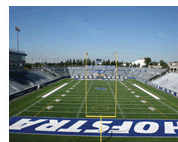Finding His Path To Happiness
Paul Asaro has overcome many challenges to achieve success and happiness.
Recently, in sports competition, Paul won gold and silver medals at the 2022 Special Olympics USA Games in Florida. He earned gold in men’s open water swimming, posting a time of 36 minutes, 6.6 seconds for more than 1,000 meters. He claimed silver in the men’s triathlon (440-yard swim, 10.8-mile bike ride and 3.1-mile run) in one hour, 33 minutes, 35.4 seconds.
When Paul returned home to Westchester County, he draped the medals around his neck to showcase his achievements for fellow parishioners at his church. For several decades, he has been an inspiration to adults and children at his place of worship and also within his community.
The 43-year-old has been involved with Special Olympics in the Hudson Valley as an athlete since 1994 and as a coach since 2008. Paul was named 2005 New York State Male Athlete of the Year and 2017 Hudson Valley Male Athlete of the Year. He has represented the United States at the 2003 World Games in Ireland and the 2019 World Games in the United Arab Emirates. Paul also has held several New York executive positions with Special Olympics.
Paul was born with duodenal atresia, a blockage between his duodenum and small intestine that led to complications with brain swelling and lack of oxygen to the brain. Despite this significant challenge at the start of his life, Paul was attracted to sports as a child. He participated in the Eastchester Youth Soccer League and was a distance runner in the track program at Eastchester High School. He was nominated for the school’s 1995 Athlete of the Year.
Paul never has allowed his disability to prevent him from enjoying life. An important part of his life is a passion for service. He is a volunteer firefighter. At his church, Paul is an altar server, usher, member of the Knights of Columbus and member of the parish council.
Though dealt a tough hand at birth, throughout the years Paul has met many challenges with his own personal philosophy: “There is always a path that makes us happy.”









